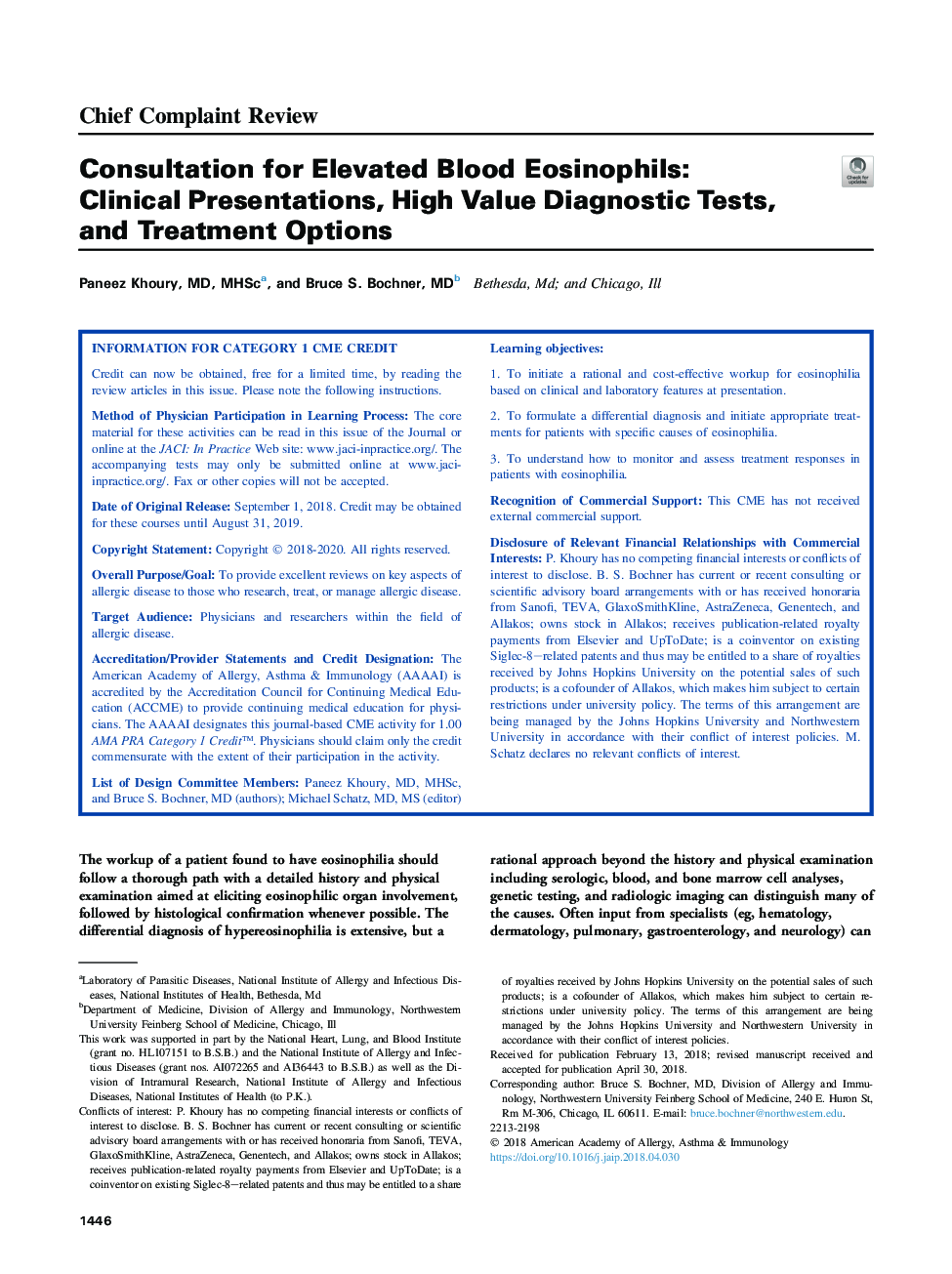| Article ID | Journal | Published Year | Pages | File Type |
|---|---|---|---|---|
| 8963735 | The Journal of Allergy and Clinical Immunology: In Practice | 2018 | 8 Pages |
Abstract
The workup of a patient found to have eosinophilia should follow a thorough path with a detailed history and physical examination aimed at eliciting eosinophilic organ involvement, followed by histological confirmation whenever possible. The differential diagnosis of hypereosinophilia is extensive, but a rational approach beyond the history and physical examination including serologic, blood, and bone marrow cell analyses, genetic testing, and radiologic imaging can distinguish many of the causes. Often input from specialists (eg, hematology, dermatology, pulmonary, gastroenterology, and neurology) can help narrow down the possibilities and eventually result in a specific diagnosis. An accurate diagnosis is key to choosing the optimal treatment for a particular condition, and this is certainly true for eosinophilic disorders. Myeloid neoplasms that present with eosinophilia, for example, may respond to medicines that the allergist may be less accustomed to using, such as immunosuppressive agents and kinase inhibitors. Similarly, newly approved biologics that target IL-5 and eosinophils may provide new options for management. What follows is a case-based approach that helps to underscore key features of diagnosis, management, and follow-up when faced with a patient with a potential eosinophil-related disorder.
Keywords
Related Topics
Life Sciences
Immunology and Microbiology
Immunology
Authors
Paneez MD, MHSc, Bruce S. MD,
